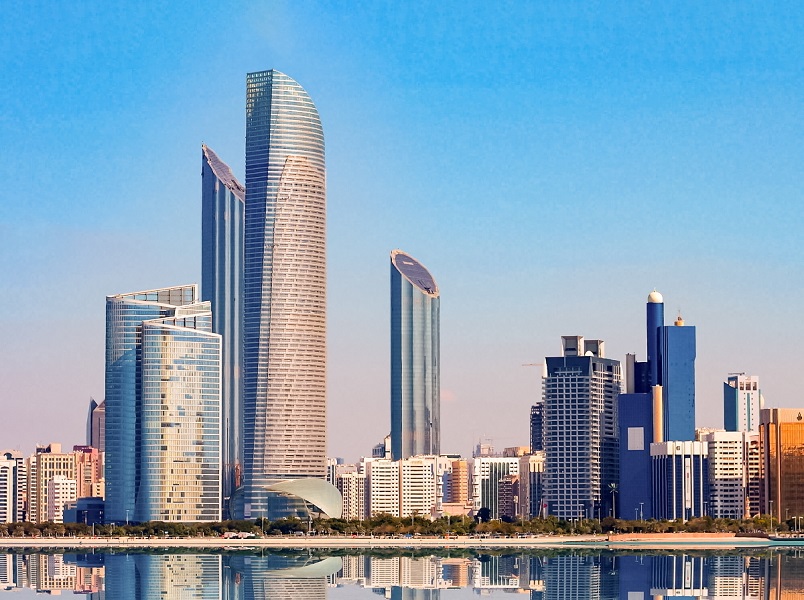Signs of Abu Dhabi’s real estate sector bottoming out with a slowing of price and rental declines
By Aliheydar_Rzayev Thursday, 23 January 2020 1:07 AM

Abu Dhabi’s real estate market is showing signs of bottoming out after a sustained period of falling capital values and declining rents, according to Chestertons latest research paper, the Observer: Abu Dhabi Market Report Q4 2019.
A marginal decline in sales prices and rental rates during the fourth quarter has resulted in renewed optimism in the real estate market, with average villa sales prices declining just 1% and apartments notching a 2% decrease. In the rental market, villas witnessed marginal fall of 2% and apartments decreased by 1% in Q4.
Chris Hobden, Head of Strategic Consultancy, Chestertons MENA, said: “More favourable supply and demand dynamics, coupled with market reforms including new business licenses, long-term residency permits and allowing foreign nationals to own freehold property, are all contributing positively to Abu Dhabi’s real estate sector.
“Going forward, we believe it is unlikely there will be the same prolonged period of price and rental decreases as witnessed over the past five years.”
In the sales market, villa prices remained resilient across most communities with little or no price movements from Q3 2019, resulting in an average 1% decline.
Al Reef and Khalifa City were subject to marginal decreases of 1% from the previous quarter, with pricing now at AED615 per sqft and AED860 per sqft respectively. Al Raha Beach witnessed a more pronounced 5% price drop from AED1,160 per sqft in Q3 to AED1,100 per sqft in Q4.
In the apartment sales market in Q4, the capital witnessed an average 2% decrease compared to the previous quarter. Similarly, to the villa market, Al Reem Island and Saadiyat Island remained unchanged at AED965 per sqft and AED1,400 per sqft respectively.
“Attractive payment plans, such as the Aldar Properties rent-to-own scheme launched in late November 2019, are allowing customers to build equity in their homes for a three-year period. Although such schemes are not new to the UAE, we have noticed a resurgence as developers explore innovative ways to attract buyers” added Hobden.
In contrast to the villa market, apartments in Al Reef witnessed a more marked decrease of 4%, declining from AED797 in Q3 to AED765 per sqft in Q4. Al Raha Beach and Al Ghadeer both witnessed declines of 2%, dropping to AED1,250 per sqft and AED725 per sqft, respectively.
From a rental perspective, average apartment rates witnessed softening of 1% in Abu Dhabi, with Al Ghadeer, Al Reem Island, Khalifa City, Mohammed Bin Zayed City, and Muroor remaining unchanged with a typical two-bedroom apartment leasing for AED52,000 per annum, AED90,000 per annum, AED60,000 per annum, AED50,000 per annum and AED65,000 per annum respectively.
Saadiyat Island apartment rental rates fell by 4%, with a typical two-bedroom apartment renting for AED135,000 per annum in Q4. In comparison, modest decreases in rental rates were seen in Al Reef, Al Khalidiya and Corniche Road dropping by 1%.
In the villa rental market Q4, on average, decreased by 2% compared to the previous quarter. Al Raha Gardens had a 6% average drop, however, it was the larger five-bedroom units that saw the largest decline, dropping from AED220,000 per annum in Q3, to AED200,000 per annum in Q4, denoting a 9% decrease.
The most resilient villa locations in Q4 were Al Reef, Khalifa City, Al Khalidya and Mohammed bin Zayed City, with no rental declines. Rates for a four-bedroom villa per annum in Q4 were AED132,000, AED160,000, AED178,000 and AED130,000 respectively.
“Attractive payment terms offered by developers, including rent-to-own schemes, could entice long-term tenants to buy units, potentially placing downward pressure on rents” concluded Hobden.




























Add new comment